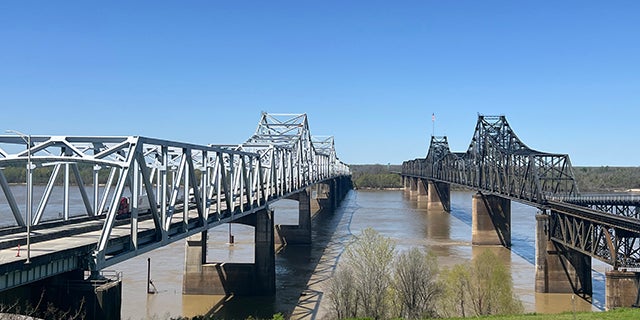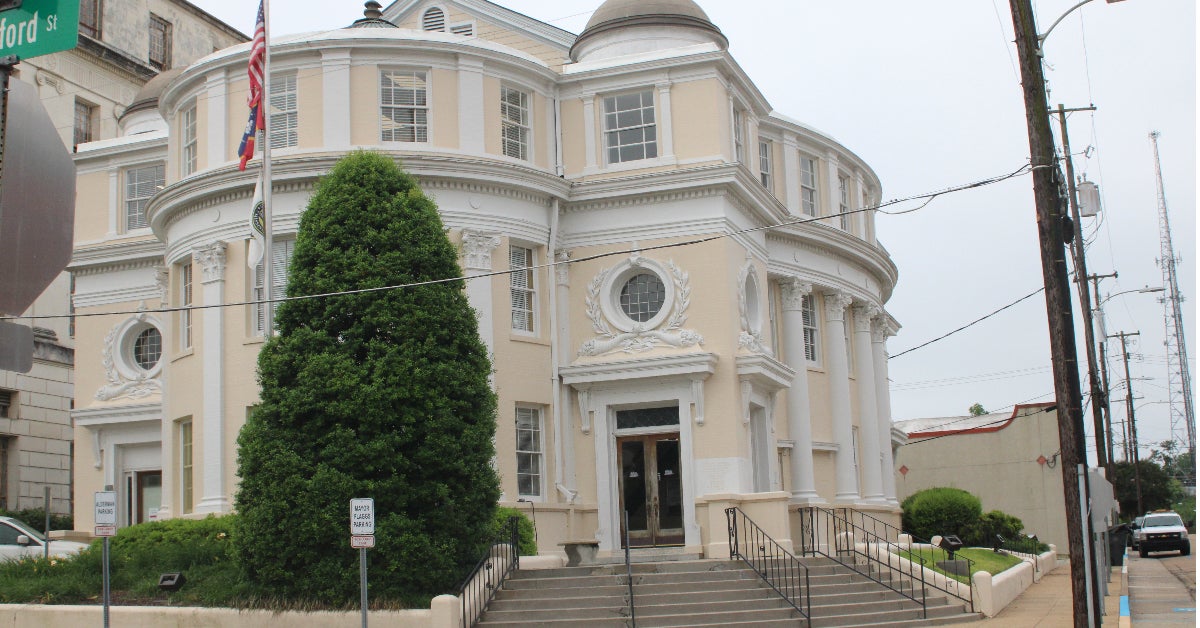Could it happen here? Local officials talk bridge safety following Baltimore tragedy
Published 11:50 pm Tuesday, March 26, 2024

- Local officials say the I-20 and Highway 80 Mississippi River bridges were constructed knowing boat collisions would occur (Blake Bell | The Vicksburg Post).
When Baltimore’s Francis Scott Key Bridge collapsed early Tuesday morning after being struck by a container ship, comments began flooding Vicksburg groups on social media. The main question: Could that happen here?
“You have to understand, those piers that hold up the Francis Scott Key Bridge in Baltimore, they’re designed to hold the structure up. They’re not designed at all for side-impacts, or for any impacts, really,” Vicksburg Bridge Commissioner Herman Smith said. “They are just designed to support the bridge structure.”
Smith is superintendent of the Vicksburg Bridge Commission, the governing body of the old Highway 80 railroad bridge in Warren County. That bridge, constructed in 1930, is a private enterprise. While Warren County owns the bridge, the bridge commission is appointed to run and maintain it as an entity separate from the county.
Smith pointed out the Francis Scott Key Bridge utilized steel for construction, whereas both bridges crossing from Vicksburg into Louisiana sit atop concrete piers.
“When you have a ship that comes in and hits (a steel) structure, the upper structure is coming down. There’s no two ways about it.” Smith said. “Our piers are designed with impacts in mind. They know it’s going to happen. That’s the main difference.”
The piers holding up the Interstate 20 bridges in Vicksburg, the U.S. 84-90 bridges at Natchez and the old Highway 80 railroad bridge in Vicksburg have at least 15-foot thick concrete on the face of them. Smith said the U.S. Coast Guard started keeping records of bridge strikes in the 1970s and the railroad bridge has been hit more than 300 times since.
Smith also pointed out the differences in size between the Patapsco River where Tuesday’s collision occurred, and the Mississippi River result in much larger vessels crossing underneath the Key Bridge.
“That span looked pretty wide, but it could have 1,000, 1,500 feet between the two big spans,” he said. “If you notice, the approaches are real steep in both directions, so the ships can clear it. Ours are not like that and that’s why a ship can’t transverse it, unless they’re low ships. But, it’s a big, wide, deep river (in Baltimore) because it’s directly connected to the Atlantic Ocean.”
Smith said the difference in the sizes of the rivers in question have direct correlations to the size of ships crossing underneath the respective bridges, with Vicksburg’s seeing traffic from much smaller vessels.
“You’re talking about a ship versus a boat,” he said. “That ship (in Baltimore) weighed 950,000 tons, so you’re talking about 190 million pounds. And it had approximately 70 containers on it, so you had about another 90,000 tons on it. A tow boat is only 919 gross tons, so you are only talking about 1,800,000 pounds. That’s why we can take a hit and the piers still stay up. Now, it shakes the bridge and will knock a little concrete off of it, but it is so solid and its foundation is so stable.”
Tuesday’s collision in Baltimore, Smith said, was on an entirely different scale than what is seen in Vicksburg.
“That’s a big boat. Considerably different in weight. If that ship was coming downriver and hit one of our piers, he’d probably take the whole bridge out too.”
In February, the Highway 80 bridge was struck by a barge in a collision more in line with what local officials typically see. Smith said then the collision did more damage to the boat than to the bridge itself, adding that the accident resulted in the river shutting down for several hours, but did no significant structural damage to the bridge or piers.





